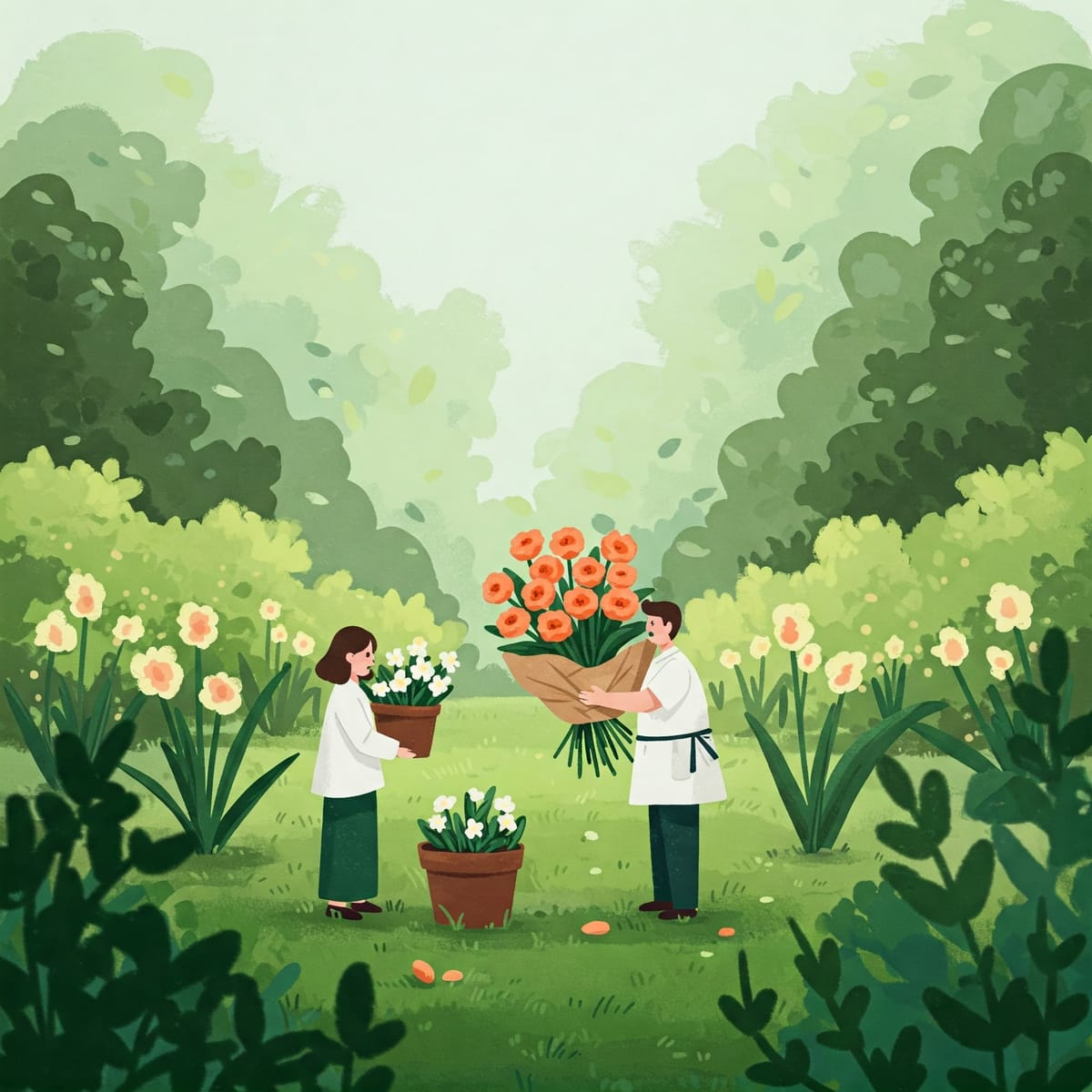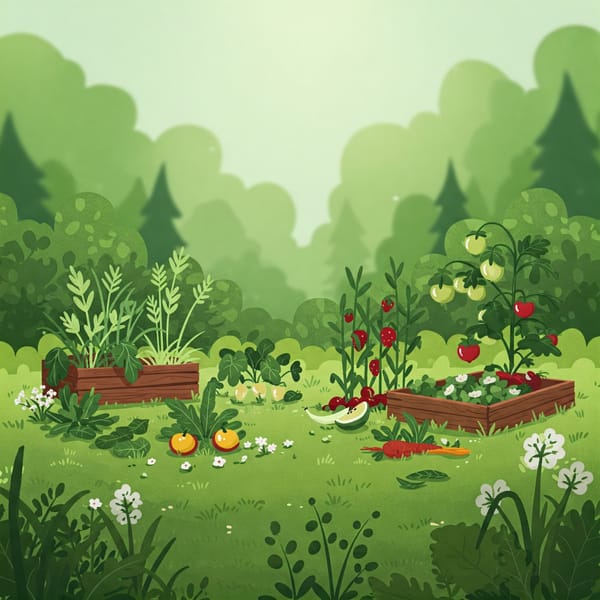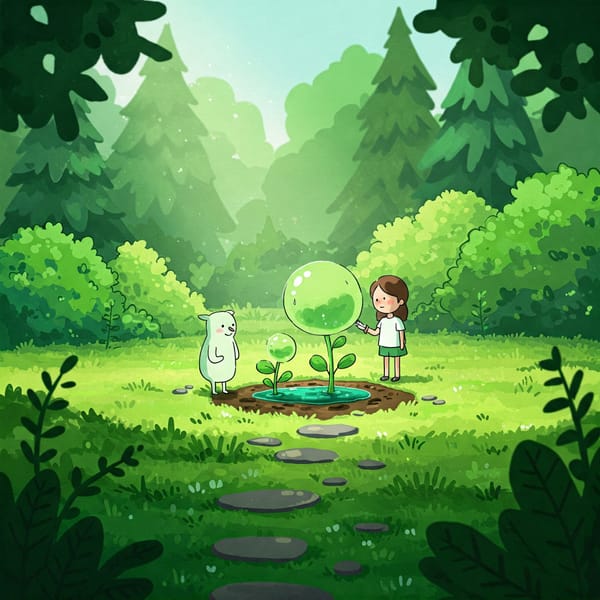Growing a Cut Flower Garden: Tips for a Season of Beautiful Blooms

TLDR
Cultivating a cut flower garden offers aesthetic, environmental, and personal benefits, including fresh, diverse blooms, cost-effectiveness, and a connection to nature. Success depends on selecting suitable plant varieties, understanding soil types, and employing succession planting for year-round blooms. Essential practices include proper seed starting, transplanting, soil maintenance, and organic pest control. Harvesting at the right time and conditioning flowers correctly maximizes vase life. Sustainable gardening practices, like companion planting and water conservation, are crucial. Planting schedules vary depending on climate and desired bloom period. Garden layout should maximize production and ease maintenance. The history of cut flowers reveals their cultural significance across civilizations. Essential tools and resources aid in successful gardening. Arranging homegrown blooms involves proper preparation and design. Flowers can be dried to preserve their beauty. Fragrant flowers enhance the sensory experience. Additionally, cut flower gardens support pollinators.
Growing a Cut Flower Garden: Tips for a Season of Beautiful Blooms
How to Grow a Cut Flower Garden in Sydney
Transform your home with the beauty and fragrance of homegrown cut flowers. Discover how to cultivate a thriving cut flower garden in Sydney, from selecting the right varieties to mastering sustainable gardening practices.
Growing a cut flower garden allows you to bring the beauty of nature indoors. The vibrant colors, delicate textures, and delightful fragrances of homegrown blooms can transform any space and elevate your everyday life. Beyond the aesthetic appeal, cultivating a cut flower garden provides a fulfilling connection to the earth and promotes sustainable gardening practices. This guide provides tips for growing a cut flower garden in Sydney.
Choosing the Right Cut Flower Varieties for Sydney
The first step to a successful cut flower garden is selecting plants that suit the local climate. Sydney enjoys a mild climate with rare frosts, making it ideal for growing various cool-season and warm-season flowering plants. While USDA hardiness zones are often used in other regions, Sydney's climate doesn't align perfectly with these classifications. Therefore, local knowledge and resources are essential for making the best choices for your garden.
Soil type is also important for the health and productivity of your cut flower garden. Most cut flower varieties prefer well-drained soil. Sydney has various soil types, including clay and sandy loam. Adding organic matter like compost can improve soil structure, enhance drainage in clay soils, increase water retention in sandy soils, and provide essential nutrients. Some cut flowers have specific soil tolerances; for example, yarrow thrives in coastal climates and tolerates salty soils. Soil testing can help you understand your garden's needs and determine the necessary amendments.
To enjoy a continuous supply of blooms throughout the growing season, consider succession planting. This involves planting different flower varieties with staggered bloom times and making multiple sowings of the same variety at intervals. Sydney's mild climate allows for a long blooming season, starting with spring-blooming flowers like daffodils, tulips, peonies, ranunculus, and anemones. Summer brings choices like zinnias, cosmos, sunflowers, dahlias, and celosia. Even autumn and winter can offer blooms from chrysanthemums, stock, and certain salvias. Local resources like Sophie's Patch and Sydney Markets provide information on the seasonal availability of cut flowers in the Sydney region.
Here are some popular cut flower varieties that tend to flourish in the Sydney climate:
| Flower Name | Type (Annual/Perennial/Bulb/Native) | Typical Bloom Time in Sydney |
|---|---|---|
| Zinnias | Annual | Summer to Fall |
| Cosmos | Annual | Summer to Fall |
| Sunflowers | Annual | Summer |
| Snapdragons | Annual | Spring to Fall |
| Sweet Peas | Annual | Spring |
| Marigolds | Annual | Summer |
| Celosia | Annual | Summer |
| Larkspur | Annual | Spring/Early Summer |
| Roses | Perennial | Long season |
| Dahlias | Perennial | Summer to Fall |
| Peonies | Perennial | Late Spring |
| Yarrow | Perennial | Late Spring to Early Summer, second flush in late Summer |
| Veronica | Perennial | Long-lasting, multiple blooms if cut |
| Rudbeckia | Perennial | Summer |
| Shasta Daisies | Perennial | Summer |
| Daffodils | Bulb | Early Spring |
| Tulips | Bulb | Spring |
| Ranunculus | Bulb | Spring |
| Anemones | Bulb | Spring to Summer |
| Gladiolus | Bulb | Summer to Fall |
| Lilies | Bulb | Summer |
| Kangaroo Paw | Native | Various bloom times |
| Waratah | Native | Spring |
| Waxflower | Native | Various bloom times |
| Everlastings | Native | Spring |
| Flannel Flowers | Native | Spring |
Many annual cut flowers, like zinnias and cosmos, have a "cut and come again" characteristic, meaning that the more you harvest, the more flowers the plant will produce.
Essential Cultivation Techniques
Successful cut flower cultivation starts with proper seed starting techniques. Starting seeds indoors offers advantages like earlier blooms and better control over environmental conditions. Use a soilless mix to reduce the risk of soil-borne diseases. Sanitize seed trays or pots with warm water and a mild disinfectant to prevent fungal issues. Moisten the substrate with warm water until it is damp but not soggy. Sow seeds at the depth specified on the seed packet. Label trays with the variety name and sowing date. Some seeds need light to germinate, while others prefer darkness. Covering trays with plastic domes can help retain moisture and warmth until germination. Provide warmth, such as with heat mats, to encourage germination. Consistent moisture is essential, and bottom watering can prevent seed displacement. Use high-quality seeds from reputable sources for best results.
Once seedlings have developed their first true leaves and the weather is suitable, transplant them into the garden. Before transplanting, seedlings need to be hardened off, a gradual acclimation to outdoor conditions to prevent transplant shock. Over one to two weeks, gradually increase the seedlings' exposure to direct sunlight, wind, and temperature fluctuations, starting with a few hours each day. Transplant on a mild, overcast day to minimize stress on the young plants. Water the seedlings thoroughly the day before transplanting. Prepare the garden soil by adding compost or well-rotted manure to improve its structure and fertility. Ensure the location has good drainage.
Gently remove seedlings from their trays, handling them by their leaves. Plant them at the correct depth and spacing for their variety. Water generously after transplanting and apply mulch around the base of the plants to retain moisture and suppress weeds.
Maintaining healthy soil is essential for a thriving cut flower garden. Incorporating organic matter like compost and well-rotted manure improves soil structure, fertility, and water retention. Regular soil testing is recommended to determine the soil's pH level and nutrient content. Most cut flowers prefer a slightly acidic to neutral pH, between 6.0 and 7.0. Adjustments can be made based on test results.
Organic pest control methods are a sustainable approach to managing pests. Prevention, by maintaining healthy and vigorous plants, is most effective. Regularly monitor your garden for pests, especially in the evenings or early mornings. Companion planting can deter pests; for example, marigolds deter aphids and nematodes. Trap crops like buckwheat and white mustard can draw pests away from your flowers. Sweet alyssum attracts hoverflies, which prey on aphids. Handpicking pests like aphids and caterpillars and dropping them into soapy water is a simple solution. Homemade sprays, such as water and mild soap for aphids or neem oil for a wider range of pests, can be effective. Apply sprays in the early morning or late evening to minimize harm to pollinators. A strong spray from a hose can dislodge aphids. Attracting beneficial insects like ladybugs, lacewings, and hoverflies provides natural pest control. Plant native wildflowers, daisies, asters, and herbs like lavender and borage to attract these beneficial insects. Crop rotation can disrupt pest and disease cycles. Keep the garden tidy by removing dead leaves and debris to reduce hiding places for pests. Insect netting can protect plants from certain pests.
Harvesting and Conditioning Cut Flowers
Harvesting flowers at the optimal stage of development is crucial for maximizing their vase life. Generally, cut flowers last longer when harvested before the blooms are fully open. Flowers like roses, cosmos, delphiniums, and snapdragons should be cut when the buds are just beginning to show color and the first few petals are unfurling. Others, like dahlias and Queen Anne's Lace, should be cut when they are close to fully open. Sunflowers should be harvested as the petals start to lift away from the central disc. Hydrangeas should be harvested when the flower heads are fully colored and mature. Spike-type flowers like snapdragons and larkspur are best cut when about one-third to one-half of the florets on the stem are open. Cosmos should be picked when the petals have started to pull away from the center and are about halfway open. Achillea should be fully opened before cutting to prevent wilting. The best time to harvest cut flowers is in the early morning or late evening, when the flowers are cool and fully hydrated. Avoid harvesting during the heat of the day.
Use sharp, clean knives or shears to make clean cuts without crushing the stems. Clean tools prevent the introduction of bacteria, which can shorten vase life. Cut the stems at a 45-degree angle to maximize water absorption. Cut the flower heads with the longest possible stems. For woody-stemmed plants like lilac and hydrangea, make a second cut an inch or two above the first cut or split the base of the stem to aid in water uptake. Remove any leaves from the lower portion of the stems that will be below the waterline in the vase. Immediately after cutting, place the stems in a bucket of clean, cool water. Some gardeners use the "pick, strip, plop" method: pick the flower, strip the lower foliage, and place it in water. Avoid overpacking the buckets with too many stems.
Post-harvest conditioning involves allowing the freshly cut flowers to rest in a cool, dark place to fully hydrate before arranging. Place the bucket of harvested flowers in a cool, dark location for several hours or overnight. For certain flower types, pulse conditioning can be beneficial: place the flowers in tepid water (around 32 degrees Celsius) for about an hour, then transfer them to very cool water (around 4 degrees Celsius) to help speed up water uptake and reduce transpiration. Before arranging the flowers in a vase, recut the stems at a sharp angle while they are submerged underwater. Use a clean vase to minimize bacterial contamination.
To further extend the vase life of your cut flowers, use a floral preservative. You can purchase these or make your own using sugar, a few drops of bleach, and a teaspoon of vinegar or lemon juice per liter of water. Change the water in the vase every one to two days and recut the stems each time. Keep floral arrangements away from direct sunlight, heat sources, and ripening fruit. Refrigerating cut flowers overnight can also help prolong their freshness.
Some flowers need additional care. For example, stems that exude a milky sap, like poppies, may benefit from having their cut ends singed or burned briefly to seal the sap. For lilies, removing the pollen-bearing anthers can help extend vase life.
Sustainable Gardening Practices
Incorporating sustainable gardening practices benefits the environment and leads to healthier, more resilient plants and beautiful blooms. Companion planting involves strategically planting different species together to create beneficial relationships. Certain plants can deter pests, attract beneficial insects, or improve soil health. For example, marigolds repel nematodes and aphids. Basil and mint can help keep mosquitoes away. Nasturtiums planted near tomatoes can deter aphids. Sunflowers attract beneficial insects like lacewings and lady beetles. Trap cropping involves planting a crop that is highly attractive to specific pests, drawing them away from your cut flowers.
Water conservation is important, especially in regions like Australia where water resources can be limited. To minimize water usage, choose drought-tolerant plant varieties and native species adapted to the local rainfall patterns. Use efficient irrigation methods like drip irrigation or soaker hoses, which deliver water directly to the root zone. Avoid overhead sprinklers, as they can be inefficient and may contribute to fungal diseases. Water plants deeply but less frequently, allowing the soil to dry out slightly between waterings. Harvest rainwater using rain barrels or create rain gardens to reduce reliance on municipal water supplies. Apply organic mulch around plants to retain soil moisture, suppress weed growth, and regulate soil temperature. Group plants based on their water needs for more efficient watering. Water early in the morning to reduce water loss due to evaporation. Regularly check and fix leaks in hoses or irrigation systems.
Organic pest and disease management focuses on creating a healthy garden ecosystem that is naturally resistant to problems, rather than relying on synthetic chemicals. Techniques include monitoring, handpicking pests, attracting beneficial insects, and using homemade sprays. Choose disease-resistant plant varieties. Proper spacing between plants is crucial for good air circulation, which helps prevent fungal diseases. Promptly remove and dispose of any plant material that shows signs of disease. Avoid composting diseased foliage. Sterilize gardening tools regularly, especially after working with diseased plants. Encourage a diverse and balanced ecosystem in your garden to naturally control pest populations. Using organic mulches can also help prevent soil-borne diseases.
Sydney's Seasonal Splendor: Regional Considerations and Planting Schedules
Sydney gardeners have an advantage because the region rarely experiences frosts. This allows for a long and flexible growing season for various cut flowers. While frost dates are important in many other climates, they are generally not a primary concern for Sydney. However, occasional light frosts can occur, and gardeners may want to protect tender plants during these times.
A planting schedule tailored to Sydney's climate will help ensure a season filled with blooms. Specific planting times can vary depending on the flower variety and your desired bloom period.
- Spring Planting (September - November): This is a prime time to sow or transplant many annual and perennial cut flowers in Sydney. Examples include cosmos, zinnias, sunflowers, marigolds, sweet peas, dahlias, and snapdragons. Spring-flowering bulbs like daffodils and tulips are typically planted in autumn for spring display.
- Summer Planting (December - February): For a continuous supply of blooms, consider successive sowings of fast-maturing annuals like cosmos, zinnias, sunflowers, and marigolds throughout the summer months.
- Autumn Planting (March - May): As the weather cools, autumn is an excellent time to plant cool-season annuals that will bloom during the winter and spring. Examples include sweet peas, Dutch iris and tulips




